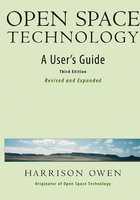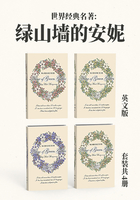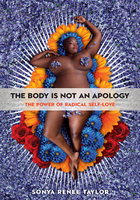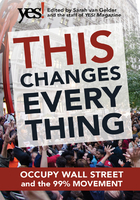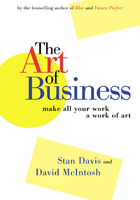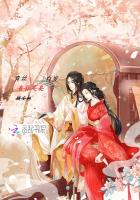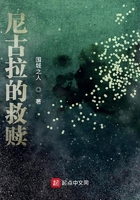This book brings together various insights and ideas I have acquired over fifty years of research, teaching, and consulting and, at the same time, reflects how the kinds of problems that organizations face in our rapidly changing world have forced the evolution of those ideas.
As I began my career as a human relations trainer and part-time consultant in the 1960s, I evolved the model of Process Consultation (introduced in my books Process Consultation, 1969; and Process Consultation Revisited, 1999), which emphasizes the need to involve the client in the process of figuring out what is wrong and what can be done about it. After several decades of working with this model and updating the book, I began to realize that the model we were using for organization and management consulting really had broader applications to all kinds of helping relationships, resulting in the 2009 book Helping. Analyzing the helping process from a sociological point of view also revealed how much our cultural norms influenced what we thought should be both the client's role and the consultant's role in the helping process.
In my own experience as a helper, it seemed crucial that the client really be able to tell what is bothering him or her and be able to be open and trusting in doing so. I then discovered that the major inhibiting factor to clients' being open and trusting is the cultural force in the United States toward telling as being the heroic model, which led helping and consulting models to be structured in terms of the formal professional stages of diagnose and then tell as recommendations. My management consulting friends told me that "this is required if you are really doing your job," which, to my dismay, I found many clients passively believed.
I recognized that the obsession with telling was a broader characteristic of the US managerial culture, which led me to write the book Humble Inquiry (2013) to point out how much potential harm was done in making subordinates feel psychologically unsafe in upward reporting if they saw safety or quality issues in how work was getting done.
In my own consulting efforts, I found that telling did not work and, furthermore, that the clients who called me in for consultation often had previously experienced the formal approach with other consultants and did not find the diagnose and then recommend approach terribly helpful. The formal process often missed the real problem or recommended things that could not be implemented for a variety of reasons that the consultant evidently had not considered.
At the same time, the problems that confronted leaders and managers became more complex to diagnose and even more difficult to "fix." I also learned through several experiences that will be discussed in the cases in this book that sometimes just the earliest questions, comments, and puzzlements that I expressed in the initial contacts with a client proved to be very helpful in enabling the client to perceive and think about the situation. This often led to immediate next moves that the client could think of that were seen by both helper and client as immediately beneficial.
All this led me to go beyond the previous models and write about what I experienced-real help can be fast, but it requires an open, trusting relationship with the client that the helper has to build from the very beginning. Because of the difficulty and complexity of the problems, and because the client's own view of what is going on is so important in the relationship, this also requires a great deal of humility in the consultant. So in this book I will describe the new kinds of problems, the new consultant–client relationship that will have to be built, and the new kinds of attitudes and behaviors that consultants will have to learn in order to be really helpful.
I think of this as an evolution in my thinking. Many of these ideas may have been implicit in earlier works, but they are only now coming into consciousness both as insights and as new principles of what has to happen if we really want to help on complex, dynamic "messy" problems and if we want to do it fast because, in many cases, clients need to do something adaptive right away.
Where Does This Fit into a Larger Historical Context?
Humble Consulting draws on elements of many prior models that deal with complexity, interdependence, diversity, and instability. Almost every theory of helping refers to the concept of relationship, but few of them talk about levels of relationships and what is involved in negotiating them. One exception is Otto Scharmer's Theory U (2007), in which he explicitly differentiates levels of conversation in his analysis of how to reach the deepest level within ourselves and in our relationships to find the true sources of innovation.
The theories and models that are most relevant to understanding these kinds of problems and developing workable next moves were initially best articulated in the study of highly reliable organizations by Karl Weick with his concepts of "loose coupling," "sense making," "embracing errors," and "resilience" (Weick and Sutcliffe, 2007). On the sociological side, I have always found Erving Goffman's analysis of interaction and "situational proprieties" to be an essential model for understanding how relationships are formed, maintained, and repaired when damaged (Goffman, 1959, 1963, 1967).
Closely related are the systemic models of "organizational learning" (e.g., Senge, 1990) and family therapy (e.g., Madanes, 1981). The work on "mindfulness" (Langer, 1997) is crucial in what I see to be the new skills that will be needed. The change programs that rely on so-called lean methods, based on the work of Deming and Juran that evolved into the Toyota Production System, are relevant if they are well executed and involve the employees who actually do the work (Plsek, 2014). Open sociotechnical systems approaches to problem identification and solution as evolved by the Tavistock Clinic have provided much more helpful ideas than standardized methods of measurement, analysis, and problem solving.
Perhaps most relevant of all is what Bushe and Marshak (2015) have identified in the last decade as "dialogic organization development," as contrasted with "diagnostic organization development," in highlighting what leadership theorists like Heifetz (1994) also emphasize-that the complex problems of today are not technical ones that can be solved with specific tools. The best we can do is to find workable responses or what I am calling here "adaptive moves." This will involve new kinds of conversations of a more dialogic, open-ended variety. The emphasis on the concept of "moves" is important in this context because it implies action without necessarily having a plan or solution in mind.
In the end I fall back on much of my learning in running sensitivity training groups in human relations labs for the National Training Labs in Bethel, Maine, where the key operational concept was "spirit of inquiry" and accepting that we did not always know where our learning process would take us (Schein and Bennis, 1965). Building a relationship that enables the client to "learn how to learn" was then and becomes now more than ever one of the crucial goals of Humble Consulting.
The spirit of inquiry is best exemplified nowadays in the concept of "dialogue" as propounded by Bill Isaacs (1999) and in Barrett's hugely insightful book Yes to the Mess (2012), which shows us brilliantly how the skills of improvisation as exhibited in the jazz combo provide some of the most important clues as to what helpers and leaders will have to be able to do in the future.
How the Book Is Organized
Chapter 1 lays out the basic problem-the complex messy problems of today and the future require a new model of helping, coaching, and consultation. Chapter 2 lays out the new elements or components of the model of Humble Consulting. The following chapters then explain and exemplify each of those components. Chapter 3 explains the concept of a Level Two relationship. Chapter 4 shows how that relationship has to be built from the moment of first contact with the client by adopting a certain attitude that hinges on maximizing curiosity. Chapter 5 explores the whole concept of personalization as key to the new consulting model. Chapter 6 highlights that the consulting is almost always more helpful on the processes that occur between client and consultant as they explore how to make adaptive moves. Chapter 7 then explores the concept of adaptive moves in more detail and in terms of the innovations that are required to make them helpful. The book closes with some conclusions and challenges for the future.

